Army presence on Mangalsala
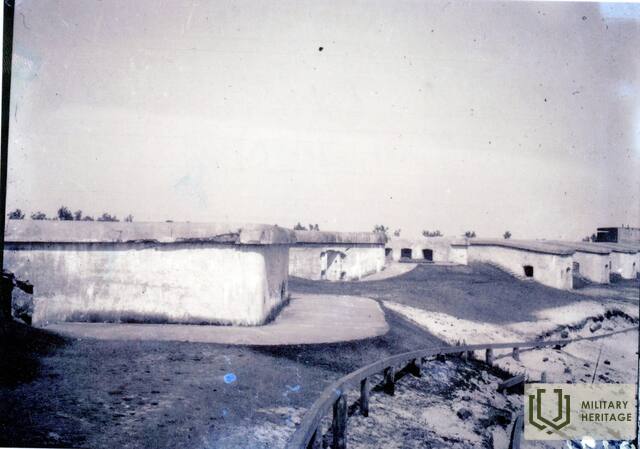
The memories contain vivid impressions of the presence of the Latvian army on Mangalsala. The forts are described, as well as the reinforced concrete fortification built by Sapiers. The memories describe the soldiers' everyday life, the rhythm of life and illustrate the environment on Mangalsala. Visit of Mangalsala and Latvian army soldiers
“(..) We cross the embankment of the Daugava branch, where the fortified district begins. The road curves into the forest. Not a single pedestrian is in sight. Silence. The forest of mixed trees smells so primal and intoxicating that you want to breathe deeply, deeply. We turn along a small, overgrown path. What a strange, low, massive building here — in the middle of the forest! — It was built by the Sapir Regiment. They take me around this small fortress and tell me this and that about it. AI. Green's masterful story "Blockhouse" comes to mind. A strange, awe-inspiring feeling remains. A little further on we cross to the other side of the road. Old forts. Their gray surfaces resemble the broad backs of giants. Around us, the light green of birches, red alders and dark green crests of pines. And strangely — walking among the ruins of old castles, climbing old towers — I have never had such It feels like standing next to these not very tall, heavy giants in the middle of the forest. It seems that you can't talk or laugh loudly here, you have to come here quietly, look and leave again quietly. Now we are not far from the camps. At the next fort we meet soldiers. A guard. Cannons covered with tarpaulins (covers, here it seems that another small country begins with its own laws, rules and order. Now we often meet soldiers, both in groups and one by one. All of them in good health and tanned in the sun. Some city dweller who is proud of his tan - here would be the real "paleness". Somewhere he hears a radio speaker. We pass a volleyball court, here, a hot match is going on. Agile, agile movements. It was really a game with a flying ball, because as far as we could see - the ball does not touch the ground. Further on, two guys come humming from the sea - both brown as coffee beans: "What harm did it do not to live on the edge of a great forest..." There is something of the spirit of the old Zemgale boyars in them. Even they themselves are broad-shouldered, well-grown. We walk past the headquarters battalion kitchen. Dinner is cooking in large pots. A smiling hostess — like the good spirit of the kitchen itself — stirs the great stew. The camp site is beautiful in itself, but the hard work of hardworking hands is also visible. Neat on the line of destruction. Around the tents is clean; smooth lawn and flowers. The representations of the battalion insignia made of colored stones and cement casting also leave a pleasant impression. They are a kind of work of art. Outside the rows of tents are several small houses, where officers and instructors live with their families. Near some houses there is even a small bright garden and a gazebo. White-covered tables show that the residents of these small summer houses are used to having azaids under the open sky. The camp is bustling with life. Visitors have gathered. An old mother sits down next to a blue-eyed soldier. She has brought the village's bribe - strawberries. Tilting her gray head, she listens to her grandson's lively language. He must be telling something good, because they are both laughing all the time. A little further away, in the shade - a family idyll. A little boy and his mother have come to visit his father in the village. The son has climbed onto his father's lap. He taps his finger on his insignia and counts the stripes: "One, two..." Dad has two stripes. Sometimes he pushes the little girl against his father's cheek, but then he studies the insignia again... Even further away - a soldier - two female visitors. Both of them are equally beautiful and cheerful. He sits down between the two and doesn't know which one to look at more often. Oh, sometimes it's not good to have too much happiness! We have to ask for a little information, and we turn to the soldier coming towards us. He has blue eyes and a wide, kind smile. He speaks in the Latgalian dialect. A son of Ezerzeme. He speaks slowly and smiles broadly and a little embarrassed all the time. A real street with a stile leads past the barracks. There, in the doorway of a house, a cook's white hat and apron can be seen. Somewhere, behind a grove, young voices sing: "Where do you grow, beautiful daughter..." The voices fly like hawks to the treetops, but we don't see the singers themselves. A slender soldier comes towards us, hand in hand with a fair-haired girl. They don't say a word, they just look at each other with smiles and - apparently - they understand each other wonderfully. Let someone else say that eyes have no language of their own; especially when the owners of these eyes are young. We have arrived at the bus stop, here a thatched mushroom has been built for those waiting for the bus in rainy weather. The eyes are delighted by the orchard arranged in neat, straight rows across the road. Then we hear the roar of the bus engine. Five beautiful hours have already flown by here — in the breath of the sea, in the rustling of the trees — watching the blooming, vigorous youth. Passers-by and those who stay gather. A dark-eyed artilleryman accompanies a dashing pink-haired girl. They still have much, much to say and tell. "Write, by all means write — I'll wait," chirps the girl. The soldier counts the days on his fingers. "By Wednesday at the latest, then you'll have a letter!" — Hand nurses hand for a long time. It's hard for them to part. A fair-haired soldier, with bright insignia, accompanies his mother. - "Greetings to father and brother — we'll see you next Sunday!" The bus is almost full. The slender soldier also bids farewell to his fair-haired friend. They hardly say anything again. A few quiet words. He timidly touches the slender fingers of the departing passenger to his lips. The bus is already moving. The fair-haired girl barely manages to get on. The small, round cashier gives her an annoyed look and hisses: "You had enough time before saying goodbye!" The blonde doesn't say anything. There's still a smile on her lips. She waves goodbye. She has beautiful blue eyes, a quiet, self-focused gaze. On the ring finger of her right hand — a delicate ring with a ruby — an engagement ring. Is it any wonder that saying goodbye isn't so easy and the cashier's stinging remark slips by unnoticed? So does the little boy seen at the camp with his mother on the bus. The little guy has so many questions that his mother has a hard time coping with his great curiosity. «Papa shoots: poof!» — I hear from the other end of the bus. The boy's cheeks are as red as a pink apple. The little cashier starts to collect money. She is almost childish, but she plays "a real lady". With a pout, she confidently hands us the tickets, arranging the naughty curls on her forehead with her other hand. Everything goes very smoothly, and her little fingers, with pink-lacquered nails, hand out the tickets and reach for the money. But then — an unpleasant incident with some older soldiers — the Cavaliers of the Lāčplētis War Order. They are half-price on this line, the other soldiers — a slightly higher exceptional price. It turns out that the cashier does not know the Lāčplētis War Order, although she is holding it to the chest of the said soldiers, stretching and arguing, attracting the attention of all the passengers. We are all embarrassed by the little "lady"'s big mouth. The bus runs smoothly and sways like swings. The Northern Lights are visible... Red River... Soon we will be driving along the straight, «straight» streets of R3«a. I want to raise my hand to greet them - to send greetings to them - in the city of tents surrounded by the rustle of trees and the breath of the sea! (..)”
The memoirs were published in the newspaper “Latvijas kareivis”, No. 126, in 1938. The headline “Visiting the soldiers in the camp”
Your comments
Related timeline
Related objects
Fortification of the Latvian Army Sapper Regiment
It is located in Riga, Mangaļsalai at the mouth of the Daugava in the sea opposite Daugavgrīva.
The Latvian Army's reinforced concrete fortification, or kaponieris, was an element of the Latvian Army's coastal defense system. It was built by the soldiers of the Sapieru regiment in 1928. Designed for shooting the enemy with machine guns in two different directions. It was secretive, hard to see and not marked on maps.
After the War of Independence of Latvia, Mangaļsala was formed as a fortified area of the Latvian army to stop potential attacks of the enemy, including landings. The intention was to enhance the effectiveness of weapons by taking advantage of special structures and terrain. Reinforced concrete fortifications were able to protect soldiers and weapons during the battle, and also allowed to control the territory with small forces. Mangaļsala was home to a Latvian army radio station and coastal defense artillery.
Nowadays, you can see a rare and well-preserved fortification in Latvia. In the territory of the seaside forest, you can see other fortification structures. A place with huge potential still waiting for revival.
Audio guide https://izi.travel/en/edbf-mangalsala-fortifications/en
Mangaļsala fortifications
Coastal fortifications are located in Riga, Mangaļsala, at the mouth of the Daugava across from Daugavgrīva. Fortifications built by different armies (Russian, Latvian, German and Soviet) can be seen here. The fortifications of Mangaļsala were built to defend the city of Riga from hostile navies. This area was strategically important for a long period of time. After World War I the Latvian Army did not yet have a strong navy. The maritime border was long and coastal defence was becoming an increasingly difficult task. The Latvian Army took over the fortifications built by the Russian Empire in the end of the 19th century and beginning of the 20th century and expanded the defence system. The artillery of Daugavgrīva and Mangaļsala would open fire on enemy ships trying to enter the mouth of Daugava, while support points at the mouth of Lielupe (Jūrmala) and mouth of Gauja (Carnikava) would stop enemy landing parties. There was also a specially equipped armoured coastal defence train that could provide artillery fire and support in the direction of Saulkrasti or Jūrmala. The aim of fortifying strategic sites was to maximise the use of weapons through special constructions and terrain advantages. Coastal defence fortifications were spread out over a large area to counter enemy efforts in the event of war.
Audio guide https://izi.travel/en/edbf-mangalsala-fortifications/en
Mangalsala Street
At the end of the 19th century, fortifications began to be built on Mangaļsala, and with them this paved road was also created, because it was practically impossible for heavy trucks to move on the dry and fine sand of Mangaļsala. Previously, the paved road led from the Vecdaugava dam (this is the place where you enter Mangaļsala from the Vecāķi side) all the way to the army dock on the bank of the Daugava. Unfortunately, a large part of the pavement was appropriated by unscrupulous people over time, so this road is no longer safe for driving with passenger cars in several sections. Part of the paved part was once covered with asphalt.
Railway branch and platform
Around 1958, a special railway branch was built on Mangaļsala from the Vecāķi station for the needs of the Soviet army. It was the most convenient way to bring fuel, ammunition, firearms and building materials to the military base located here. Even earlier, starting from the 20th century and up to the Soviet years, a narrow-gauge railway ran through the entire Mangaļsala, transporting ammunition to the gun emplacements. Later, a more serious railway branch was built, crossing the Vecdaugava over one of the two – the least known – dams on Mangaļsala. For example, it is no longer possible to access this dam from the Vecāķi side, because the view is blocked by private property. The concrete hillock visible in nature was a platform. When Soviet troops left Latvia in the early 1990s, 600 wagons with approximately 30 tons of ammunition were transported along this railway. It is said that at that time it was done in such a hurry and so carelessly that "the whole of Riga could have been seen in the air". Or at least a certain Riga neighborhood. Shortly afterwards, the railway was dismantled.
Closed ammunition depots built in the 1950s
In the 1950s, such a bunker was built and covered with earth so that a potential enemy could not find it so easily. There are four such buildings in Mangalsala in total, all of which were built between 1953 and 1955. During the Soviet era, ammunition was stored here - underwater mines, torpedoes, etc. Currently, this is the cleanest of the closed-type ammunition depots from the Soviet era, but if you go further, you can also see the largest one.
Attention! To protect hibernating bats (all species are protected), do not move underground and inside bunkers from October to April.
Open ammunition depots, lightning conductors, wells
During the Soviet era, so much ammunition and military equipment was brought to Mangaļsala that there was not enough space in the warehouses, so a large part of it had to be stored in the open air. Only such things that could be damaged by moisture were placed in the premises. This action also shows the careless attitude of the Soviet army towards any kind of inventory: a sandbank was built around it, of which a small hillock still remains, but the bank itself protected the ammunition from fires and explosions. If a rocket were to explode in the vicinity here, the blast wave would hit the bank and would not reach further, or would reach a much smaller extent. Nearby is a reinforced concrete pole - a lightning rod! Such poles allowed to protect ammunition from lightning strikes. Similar poles can be observed in other places. Former water wells are also visible, so that if necessary, something could be extinguished. In general, information about the Mangalsala ammunition depots was very secret - even on old Soviet military maps these places are marked as pioneer camps. Approximately 50 meters behind the embankment is another concrete bunker.
Projectile warehouses
This building was built between 1876 and 1885, when Tsar Alexander II and after him Tsar Alexander III ruled here. It is worth paying attention to the facade of the building with cornices and window openings, etc. decorative forms. This building was used as a warehouse where cannon shells were stored. Approximately 300 meters from here there is another such warehouse, which even has beautiful, curved window grilles. Similar red brick military buildings can still be found here and there in Latvia - for example, in Liepāja Karosta. All the red brick buildings on the territory of Mangaļsala were built at about the same time. At that time, the political situation in Europe was complicated, and the Russian Empire began to militarily strengthen its Western border. The building has a double outer wall and air circulates between the walls, which not only creates additional ventilation, ensuring the necessary temperature and humidity level in the building, but is also able to cushion the explosion. In the event of a large explosion, the outer wall collapses, but the inner one remains intact, protecting what is inside the building. On top of the bunkers on the other side of Mangaļsalas Street, there were mortar positions. During the time of free Latvia – in 1926 – anti-aircraft guns, or cannons that move on wheels, were placed instead of mortars! Not far from here is one of the thickest pine trees in Riga. Moreover, it is not only thick and large, but also wounded – bullet marks can be found on the pine trunk. In what battles the pine suffered – it is unknown!
Attention! To protect hibernating bats (all species are protected), do not move underground and inside bunkers from October to April.
Chemical warehouse and bypass road
This bunker was built in 1955 – during the Soviet occupation. The path around this building was once a bypass road, surrounded by a double barbed wire fence. Guards walked behind it and watched to see if any unauthorized person approached the facility. This building is mentioned in some sources as an ammunition depot, and in others – a chemical storage facility. It is said that there were even nuclear missiles here, but no traces of radiation have been found here. It is completely dark inside, but then, light is visible. It was once a ventilation system. This is the only building on Mangalsala that had ventilation. Cargo was brought here by wagons along the railway. The acoustics are very good – once a youth choir even had a rehearsal here! However, here and there, graffiti art works are placed on the walls of the building.
Attention! To protect hibernating bats (all species are protected), do not move underground and inside bunkers from October to April.
Latvian Army Spotlight Point
The peculiar horseshoe-shaped concrete structure was once the location of a searchlight. Meanwhile, a hundred meters further towards Vecāķi, a searchlight helmsman sat in a small concrete bunker and watched for any unauthorized person approaching from the coastal side. There were practically no trees here, so the entire area was clearly visible. If an attacker started shooting at the light source, the helmsman would be completely protected – submerged in the cover of darkness and concrete. This searchlight point was built by the Latvian army in 1928, continuing to adapt the already militarized Mangaļsala to its needs. Later, during the Soviet occupation, the searchlight could also be used to watch for anyone intending to go in the opposite direction and flee to the “wild west”. Leaving the country without permission was prohibited. In addition to security, the coastal sand was also plowed up so that the tracks of illegal immigrants or pedestrians could be seen.
Coastal artillery battery
This is the largest military structure on Mangalsala, which began to be built between 1912 and 1916. The walls of the bunker were several meters thick, and it was protected from the sea by a sandbank. During the First World War, the German fleet did not come to Riga, only thanks to the cannons stationed here. In 1917, the Russians withdrew from Riga on their own and blew up part of the bunker when they left. During the Latvian Independence period – in the 1930s – and later during the Soviet years, this battery was renovated and expanded – the cannon platforms were rebuilt and new cannons were installed. In 1941 – during the Second World War, the Russians blew up this battery again, fearing that German troops might enter Latvia. The first cannons fired approximately 12 to 15 kilometers, but the newer ones could hit the target at a distance of up to 40 kilometers. There is an inscription: “Built by sailors” - built by sailors in 1946. In the basement of the bunker there were ammunition cellars, where the shells needed for the guns were stored. There were special hatches in the walls through which shells could be fed for faster loading of the guns in combat conditions. Now here is the longest military tunnel on Mangalsala - a corridor about 100 meters long. In the spring, part of the bunker tends to flood! In the 1960s, aviation technology developed, missiles and air defense systems were invented, and this battery with all its guns - once so scary and powerful - became unnecessary to anyone.
Attention! To protect hibernating bats (all species are protected), do not move underground and inside bunkers from October to April.
Riga Garrison Army Tent Camp
Now there are bushes and thickets here, but in the thirties of the last century, the Riga garrison army summer camp was located here. In some places you can still see what look like rectangular ramparts. In these places there were soldiers' tents, arranged in four long rows, with small streets in the middle. At the ends of the rows stood the logos of the garrison units - they were cast from concrete, but the ornaments and inscriptions were made of small, colorful stones. The ramparts around the tents were necessary not only to retain moisture, but also for military purposes. If landing troops entered Mangaļsala, they would be used as trenches under the cover of which to protect the territory from the enemy. Although real military training was taking place here, a romantic idyll reigned in the air, which is also visible in photographs of the time. Young people played volleyball. In the courtyards of the officers' cottages, gazebos and flower beds were well-groomed. The soldiers were visited by their loved ones on weekends, bringing baskets of strawberries and fresh bread. Most meals were eaten outside at tables in the fresh air.
Army town
In this neighborhood, in the late 1920s and early 1930s, the Latvian army built an army camp for officers and soldiers who worked on Mangalsala. Later, the camp, along with the Mangalsala military base, became the property of the Soviet Union. Civilians without a certain status lived here, but later social apartments were created for low-income people. On the right side there was a football field and small gardens, but over time they turned into meadows and swamps. Later, private houses and a car service appeared here. Until the 1960s, Mangalsala was not part of Riga at all, but part of Mangali parish. At that time, people here were engaged in fishing or worked at the army base, because agriculture was practically impossible – the area of arable land on Mangalsala is only 3.8%. Once upon a time, a narrow-gauge railway ran through the camp right along Mangalsala Street, but the street itself was paved. Now the pavement is hidden under a layer of asphalt. At the end of the road is the port area and the former military pier. Army ships were once moored there, and footbridges were built between them.
Can be seen from the outside, walking along Mangaļsalas Street.
Remnants of training torpedoes
According to eyewitness accounts, the Soviet army stored ammunition on Mangalsala very carelessly, which could have been the cause of man-made disasters. Ammunition had been stored in this area since the time of Tsarist Russia – in both closed and open-type storage facilities. During the Soviet era, ammunition and naval mine warehouses of the USSR Baltic Fleet were located here. There was supposedly a torpedo workshop in Daugavgrīva.
“In Mangaļi, Riga District, where our mine and torpedo warehouse was located, 400 thousand tons of explosives were stored. (…) In addition, the warehouse stored hundreds of torpedoes, sea mines, fuse-detonated explosive charges and all sorts of other explosive junk. There was also a charge deactivation workshop. And a whole pile of small arms – from SKS carbines to “Parabellum” pistols,” writes former officer – Captain 2nd Rank Andrejs Riskins.
Nowadays, the "torpedoes" seen in the forest are training torpedo hulls cast in concrete.
Eastern (Mangalsala) Pier
Both piers on the Daugava are closely connected with military events and history. They were built at the end of the 19th century to reduce the clogging of the river mouth and regulate the flow, thereby ensuring shipping and at the same time - the protection of the Daugava mouth. Their strategic importance was associated with the protection of Riga as an important port and military base.
During World War I and the Latvian War of Independence, the area around the mouth of the Daugava River was a zone of military operations. During World War II, the piers were of great strategic importance, as they helped control the approach to Riga from the sea.
The pier is based on a wooden pile structure covered with stones. The pier is approximately one kilometer long.
Although today the Daugava piers are mainly used as a walking area and a historical site, their historical connection to military strategy and the protection of sea routes is an important aspect of Latvian history.
Caution! The surface of the pier can be slippery. Visiting it during strong winds and storms is dangerous!




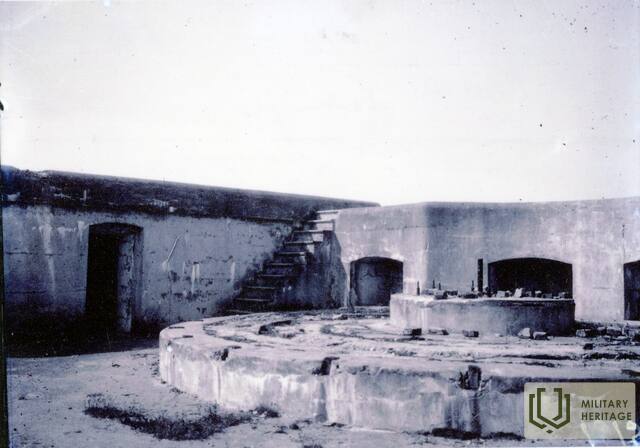
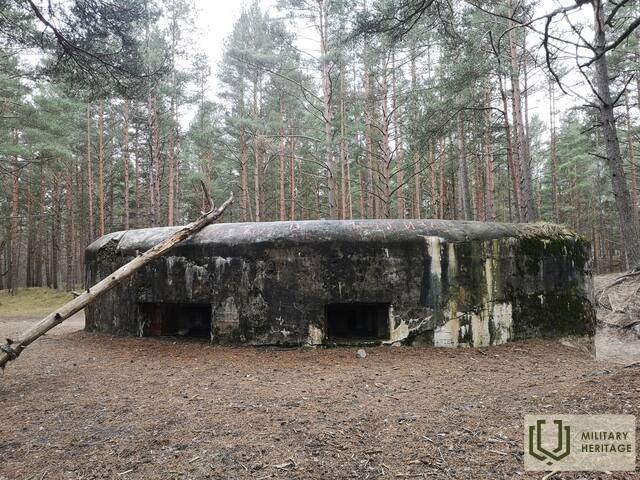
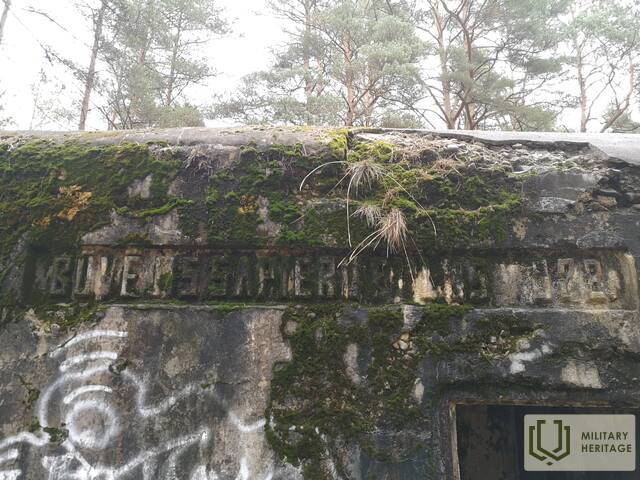

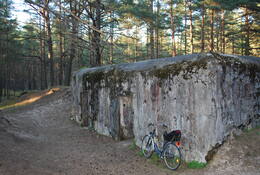
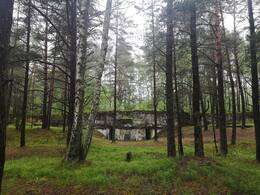
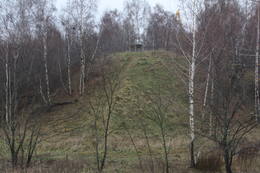
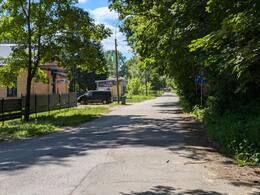
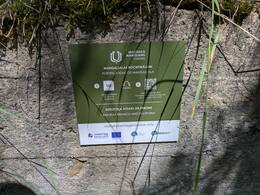
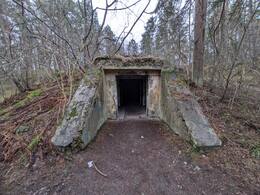
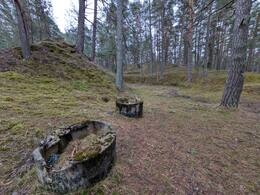
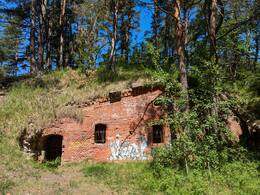
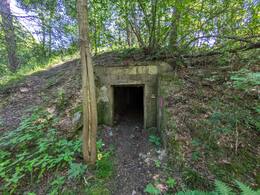
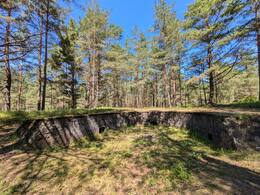
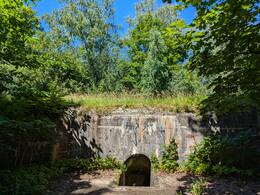

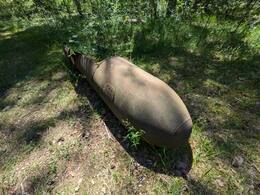
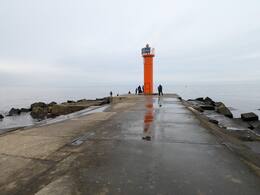
LKM photos - Liepaja Fortress 6th battery, not in Mangalsala.